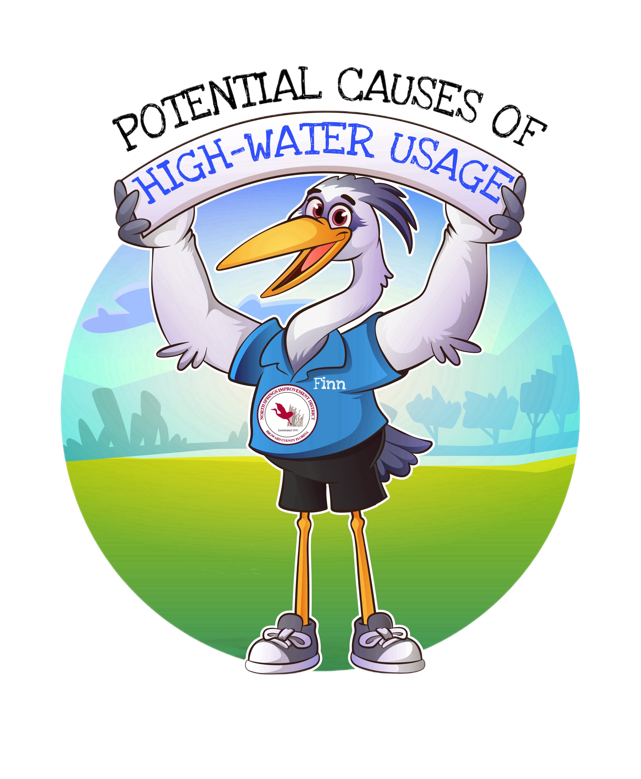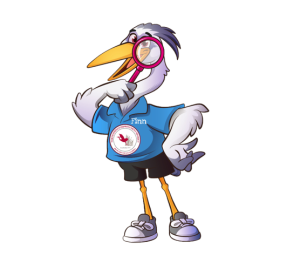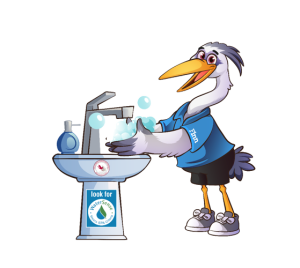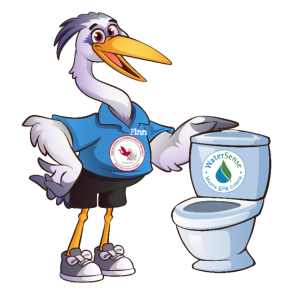Finn’s Helpful Hints

Water is a major utility in any city, making it a significant concern for homeowners, renters, and commercial property owners. A high-water bill is troublesome not only because of the financial cost but also because it indicates that precious water may be wasted. According to the EPA, the average household’s leaks can account for nearly 10,000 gallons of wasted water yearly, and ten percent of homes leak 90 gallons or more daily.
When your water bill is higher than usual, it’s essential to track down the cause and correct it as soon as possible. Here are the most common reasons for a high-water bill and what you can do to address them.
- Seasonal Changes and Water Consumption
- Household Guests
- Toilet, Faucets, or Showerhead Leaks
- Leaky Washing Machines or Dishwashers
- Outdoor And Underground Leaks
- Irrigation Systems
- Water Softeners
- New Water-Consuming Equipment
Here are a few things to check if your usage is higher than usual:
SEASONAL CHANGES AND WATER CONSUMPTION
A change of seasons can change your water consumption. Summer is notorious for higher water bills for several reasons:
- Household members are more active and sweat more, leading to more showers
- Lawns and plants need to be watered regularly
- Kids are home more throughout the day during summer break
- Air conditioners may be water-cooled
- Pools may need to be filled
Of course, water bill increases can happen in other months as well. For example, in the winter, you may occasionally run your water to avoid freezing pipes. Or, humidifiers attached to the furnace could be improperly adjusted or malfunctioning.

Finn Tip: Generally, water consumption is higher during the summer due to the watering of lawns, pools, and gardening. An average family of four typically uses 8,228 to 9,724 gallons of water per month.

CHECK FOR LEAKS
Whether unseen or unfixed, leaks can waste hundreds, even thousands, of gallons of water. It is important to routinely check your plumbing and home for leaky faucets, toilets, outside taps, and irrigation lines.

FAUCET LEAKS
A leaky faucet that drips at one drip per second can waste more than 3,000 gallons of water per year—the amount needed to take more than 180 showers!
Over time, gaskets can become hard and brittle, and they may no longer provide a snug fit. As a result, water can leak past the gasket and into the handle, causing the faucet to drip. Replacing the gasket is a relatively simple and inexpensive way to fix a leaking faucet. Remove the handle, unscrew the old gasket, and screw on a new one.
Here’s an EPA WaterSense tutorial on “How to replace your faucet aerator.
HOUSEHOLD GUESTS
You may not think about it, but one small change in your household situation can significantly impact your utility bill, such as adding a new guest or family member to your household. This is especially common during the holidays when kids are on break and back home or family or friends are staying over.
The best fix to counter or prevent a sharp spike in your water use is to plan when possible. In some cases, you may need to budget for higher water consumption during certain months or for as long as you have that additional person in your home.

Finn Tip: It’s also essential to ensure the washer is the proper size and style for the faucet. If the washer is too small or big, it won’t create a good seal, and leaks are more likely.

TOILET LEAKS
According to EPA WaterSense, toilets are the primary source of water use in the home, accounting for nearly 30 percent of an average home's indoor water consumption. Older, inefficient toilets that use as much as 6 gallons per flush are a significant waste water source in many homes. It shouldn't come as a surprise, then, that they pose a significant leak risk. A running or leaky toilet can waste up to 200 gallons per day and a staggering 6,000 gallons per month, adding hundreds of dollars to a water bill. See the toilet assessment below for help in determining if this is the cause of your high-water bill.
DO-IT-YOURSELF TOILET ASSESSMENT
First, check for the most common leak: a deteriorated or defective flush valve (flapper) ball at the bottom of the toilet tank. Water will leak into the toilet bowl if the ball does not seal tight.
To check for this:
- Take the lid off of the tank behind the bowl, flush the toilet, then wait for it to refill fully
- Put a few drops of dye or a colored dye tablet (available at most hardware stores) in the tank
- Wait at least 20 minutes; longer if you suspect it is a small leak
- If there is any color in the toilet bowl, there is a leak.
Here’s an EPA WaterSense tutorial on “How to replace your leaky toilet flapper.”
The second most common type of leak involves an improperly adjusted or broken fill (ballcock) valve. To check this, take the lid off the toilet tank, flush it, and see if water drains into the overflow tubes when the tank is full.
The following table shows the amount of water that can be lost (and billed to your account) for various-size leaks.
Leak Size | Gallons Per Day | Gallons Per Month | Cubic Feet Per Quarter |
A dripping leak consumes | 15 gallons | 450 gallons | 180 cubic feet |
A 1/3 in. leak consumes | 264 gallons | 7920 gallons | 3168 cubic feet |
A 1/16 in. leak consumes | 943 gallons | 28,300 gallons | 11,319 cubic feet |
A 1/8 in. leak consumes | 3,806 gallons | 114,200 gallons | 45,681 cubic feet |
A 1/4 in. leak consumes | 15,226 gallons | 456,800 gallons | 182,721 cubic feet |
A 1/2 in. leak consumes | 60,900 gallons | 1,827,00 gallons | 730,800 cubic feet |
SHOWERED LEAKS
A showerhead leaking at ten (10) drips per minute wastes more than 500 gallons per year. That’s the amount of water it takes to wash 60 loads of dishes in your dishwasher. Some leaky showerheads can be fixed by ensuring a tight connection between the showerhead and the pipe stem and using pipe tape to secure it.
Faucet ON: If the showerhead leaks when the faucet is ON, the buildup may have clogged the showerhead’s holes, impeding water flow. In this case, repair or replace the showerhead.
Faucet OFF: If the showerhead leaks when the faucet is OFF, the cartridge inserted in the faucet valve is likely old or defective and should be replaced.

Finn Tip: It's also a good idea to check and, if needed, replace the washer or "o" ring inside the showerhead while making this repair.
Here’s an EPA WaterSense tutorial on “How to add teflon tape and replace your showerhead.”
LEAKY WASHING MACHINES OR DISHWASHERS
Other unnoticed leaks that may be tucked away are washing machines. So, be sure to check underneath it. You might also consider a high-efficiency washer that uses up to 50% less water than older models.
Now, how about that dishwasher? It could be leaking as well, so be sure to check. But remember: Using a newer dishwasher uses less water than washing by hand. According to USA Today, hand washing uses five times as much water as an efficient dishwasher and 3.5 times more water than an average dishwasher. That’s not counting the energy used to heat hot water or the time you could spend doing something else, and the more dishes you wash by hand, the more water you waste.
OUTDOOR AND UNDERGROUND LEAKS
Leaks can also occur in harder-to-find places, such as your house or the service line between your water meter and your home. Check outdoor spigots and crawl spaces and look for wet spots in your yard, which may indicate a leak.

Finn Tip: Don't forget garden hoses! Check your garden hose for leaks at its connection to the spigot. If it leaks while you run your hose, replace the nylon or rubber hose washer and ensure a tight connection to the spigot using pipe tape and a wrench.
IRRIGATION SYSTEMS
During the dry months, irrigation systems are the common source of high-water usage. Watering times generally double during the dry months compared to the rest of the year. Automated irrigation systems should be checked regularly to confirm they are working correctly and have no leaks or broken sprinkler heads. If a sprinkler valve sticks on, it could waste substantial water. The irrigation timer may need to be programmed; i.e., sprinklers are watering too often and/or too long. Reprogramming may be necessary if the power has been off.
Finding these leaks can be tricky, especially if the irrigation system lines are buried out of sight. To spot these leaks, you may need to check your lawn for unusually damp patches or grass areas that are lusher than their surroundings. However, remember that these signs of a leak are similar to those of a leak in a lateral line.

Finn Tip: Check your garden hose for leaks. If it leaks while you run your hose, replace the nylon or rubber hose washer and ensure a tight connection to the spigot using pipe tape and a wrench.
WATER SOFTENERS
Customers with water softeners have higher water bills due to their system’s regeneration or backwash cycles. The systems are preset to regenerate or backwash regularly. The systems will use water to clean the filter media and discharge the wastewater into the ground next to the system. Sometimes, these systems get stuck in a cycle, which will cause higher water usage.
NEW WATER-CONSUMING EQUIPMENT
On a related note, adding new water-intensive equipment to your home can also cause a significant increase in your water bill. Pools, sprinkler systems, washing machines, freezers, and other new equipment can result in a sudden increase in your water bill.
To minimize the impact of new equipment on your water bill, for example, when adding a pool to your property, cover it when it’s not being used to minimize the water loss from evaporation so you don’t have to use as much water to refill it.
What Can I Do If My Bill Is Unusually High?
If you receive a bill you feel is too high, check over the common causes listed above. This may help pinpoint the source of the excess usage. The District’s utility billing program often detects unusually high bills and automatically sends our utility staff to check the meter and property for leaks.
If you feel your bill is too high and the District has not contacted you, please get in touch with our office. District staff will gladly schedule a meter reading to be rechecked.
If the meter reading is checked and found to be accurate, you may need to contact a plumber or other professional to help determine the source of the leak. Property owners are responsible for all private water lines from the meter to the residence and for leaks inside the home.
Please call the office at (954) 752-0400, option #1, or email nsid@nsidfl.gov.
